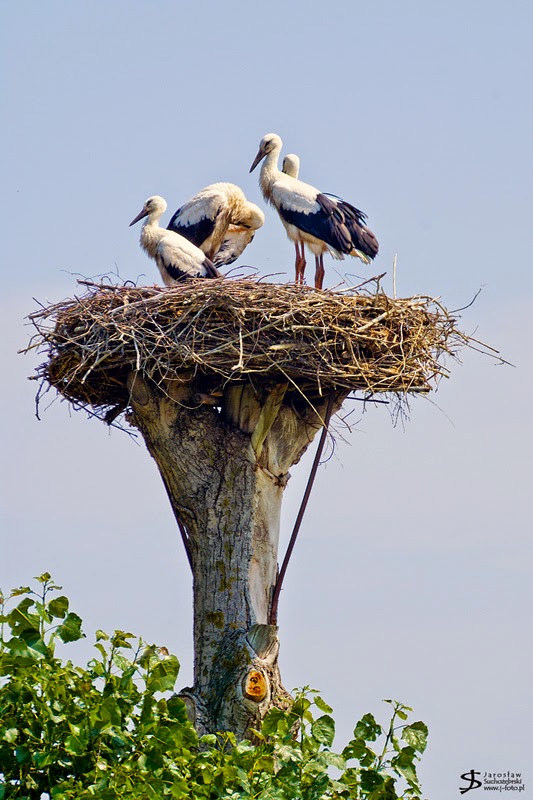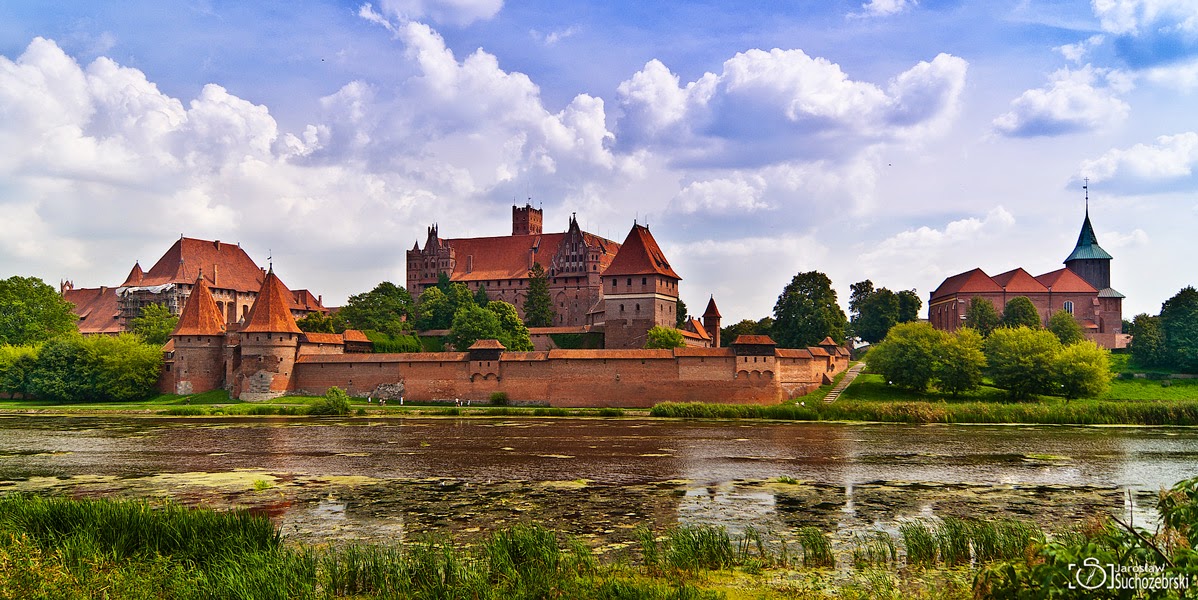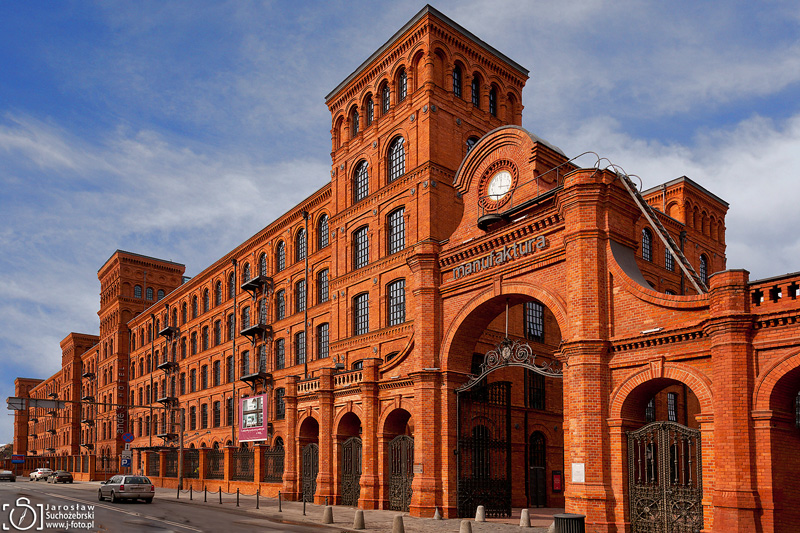Storks
Every fourth stork in the world comes from Poland. The biggest density of stork nests is observed in the North- Eastern and Eastern part of Poland. Storks rebuild their nests each year. The nest is constructed above the ground, on poles, very often in close proximity of human settlements: on the tops of barns and houses.
Storks have been present in the Polish folk culture and landscape for centuries and have found their place in our folktales, proverbial sayings. Among the most common ones there is of course the superstition about storks bringing babies. Constructing of stork nest in a particular household is believed to bring its owner good luck and prosperity. It is also believed to protect a house from thunder strikes. Storks are also appreciated for their role as beneficial animals: they feed on species considered to be pests, such as rodents. (See: Storks - the Symbol of Poland)






















I so love these majestic birds which become so rare to watch nowadays.And I had no idea that so many of them nest in Poland, thanks for letting us know.
ReplyDeleteA smashing photograph to see this Stork family at its nest. Have a good week.
ReplyDeleteI love how you framed the shot. Thank you for linking up with Through my Lens.
ReplyDeleteMersad
Mersad Donko Photography
Looks a bit like an eagle or osprey nest. - Margy
ReplyDelete